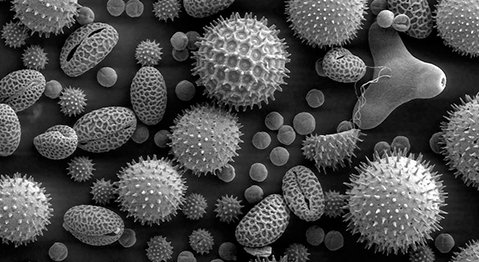[vc_row][vc_column][vc_column_text]By Jennifer Leepard, MD
Have you ever been outside on a beautiful Spring morning with the wind blowing and enjoying the flowers and the trees only to find your car covered with a fine yellow powder? When you clean it off your windshield, do you start sneezing? Are your eyes itchy and red? Does your nose start to run like a faucet?
Odds are you’re suffering from allergies – especially if, when you blow your nose, you notice that the mucus is clear and runny, and you’re not experiencing a fever, muscle aches and pains or swollen glands. Allergy sufferers also frequently experience post-nasal drip and drainage in the back of the throat, sore throat, a raspy hoarse voice and cough.
Seasonal allergies, also known as Hay Fever or Allergic Rhinitis, affect 20 percent of us and, odds are, if your parents were allergy sufferers, you’re quite likely to have them too. Many people experience them when they are children or young adults and must manage them year-round for the rest of their lives. Others experience allergies for a shorter duration or in response to exposure to a specific type of plant or pollen when it’s in bloom during the spring or fall.
What is happening in your body? When you breathe in an allergen, your body thinks it is a harmful substance. Your immune system then reacts to capture and remove the allergen, causing the allergy symptoms that we find so bothersome.
What allergen is triggering your system? Well, there are four categories of allergens that can prompt an attack of seasonal allergies along with ways you can manage them.
Pollens. In the Spring and Summer, allergies are caused by the pollen of trees and grass. In the Fall, weeds, such as ragweed, are often to blame. If you’re having issues, check the pollen forecasts at www.pollen.com and you may be able to figure out which pollen levels correspond with your reaction. When the pollen counts are high:
- Stay indoors, keep windows closed and use the air conditioner and HEPA filters
- If you do have to go outside, take allergy medication 30 minutes beforehand and wear a facemask. When you come back in, be sure to shower, wash your hair and face to remove pollen after being outside and put on clean clothes.
Insects. House dust mites, cockroaches, and ladybugs are insects that can cause allergies. House dust mites live in house dust and feed on dead skin flakes. If you’ re reacting to these allergens:
- Encase your mattresses, pillows, and box springs in allergen-proof coverings
- Wash your bedding weekly in hot water (at least 130° F)
- Dust ceiling fans
- Keep stuffed animals off beds
- Wear a face mask when cleaning your house
- Change the furnace and A/C filters regularly
- Reduce clutter in your home
Animals. Allergens can come from the animal’s skin (dander) or fur, from feathers, or saliva. Cat allergies are twice as common as dog allergies, but the problem isn’t the feline’s fur. It’s the proteins in the cat’s saliva, urine and dander that causes the allergies. If you’re hoping to share your home with your pet, here are some ways you can reduce your allergic responses:
- Restrict your pet to rooms with tiled or hardwood floors
- Keep them out of your bedroom and furniture
- Bathe your pet weekly with warm water and pet soap
- Vacuum frequently and use a HEPA filter
- Choose allergy-friendly pet breeds
Molds. Mold spores usually grow in weather that is humid, wet or damp, so you’d think that Southern Nevada would be immune to this allergy risk. However, mold can grow in your cabinets, especially if you have a leaky sink. Bathrooms also collect molds when they’re not properly ventilated. Here are some ways to treat mold and to keep it from coming back:
- Clean moldy areas thoroughly with fungicide or bleach
- Fix water leaks
- Use a dehumidifier to reduce humidity
- Clean furnace filters, refrigerator, and drip pains with bleach
- Don’t use fans that draw air from the outside and use the A/C instead
- Wear a mask when mowing grass, raking leaves and handling compost
If you can’t figure out what you are allergic to and are really suffering, your primary care doctor can order blood tests. You could even see an allergy specialist for skin testing.
When allergens are unavoidable, here are some ways you can manage your symptoms:
- Nasal irrigation (e.g., Neti Pots and Navage)
- Herbal remedies (e.g., Butterbur, Quercetin, and Stinging Nettle)
- Steroid nasal sprays (e.g., Flonase and Nasonex)
- Antihistamines (e.g., Claritin and Zyrtec)
- Preventative medications (e.g., Singular)
- Immunotherapy such as allergy injections and sublingual medications (e.g., Oralair)
Consult with your primary care provider before you begin taking any new medications, especially if you are taking medications for high blood pressure. Also, be sure to carefully read and follow the medication’s instructions.
Hopefully this information gives you some insight on those troublesome allergies that many of us suffer from. The next time you walk outside on a beautiful Spring morning, I hope you truly enjoy the trees and flowers without sneezing and running for a tissue![/vc_column_text][/vc_column][/vc_row]


